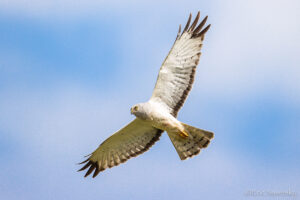Our properties provide public access to a variety of ecologically diverse landscapes, including beaches, ponds, salt marshes, forests, grasslands, and more. Nantucket is home to spectacular wildlife, from our bay scallops and flowering asters to our northern harriers and long-eared bats. Many of the species that inhabit the near pristine habitats of Nantucket are protected at the state or federal level. The Land Bank ensures that these rare or endangered species thrive through adaptive management of early successional ecosystems, such as the globally rare sandplain grasslands, coastal heathlands, and pitch pine barrens, which are integral to Nantucket’s iconic landscapes. These ecosystems are maintained through seasonal management practices including mowing and prescribed burning. The removal of invasive plant species is critical to sustaining native biodiversity.
Today, nearly half of Nantucket is conserved as open space in perpetuity. This incredible achievement is a testament to the collaborative efforts of many conservation-minded people who have worked to conserve and permanently protect our native habitats and lands of high ecologic and scenic value that serve to keep the Nantucket community healthy and connected to the natural world.
This abundance of open space preserves Nantucket’s natural beauty, protects the island’s aquifer and coastal resources, conserves valuable wildlife habitat, and promotes an active lifestyle by providing land and water access for a variety of outdoor recreational activities.
If you’re interested in conducting biological research on a Land Bank property, please email Dr. Emily Goldstein Murphy, Research Ecologist, with questions at egmurphy@nantucketlandbank.org.


